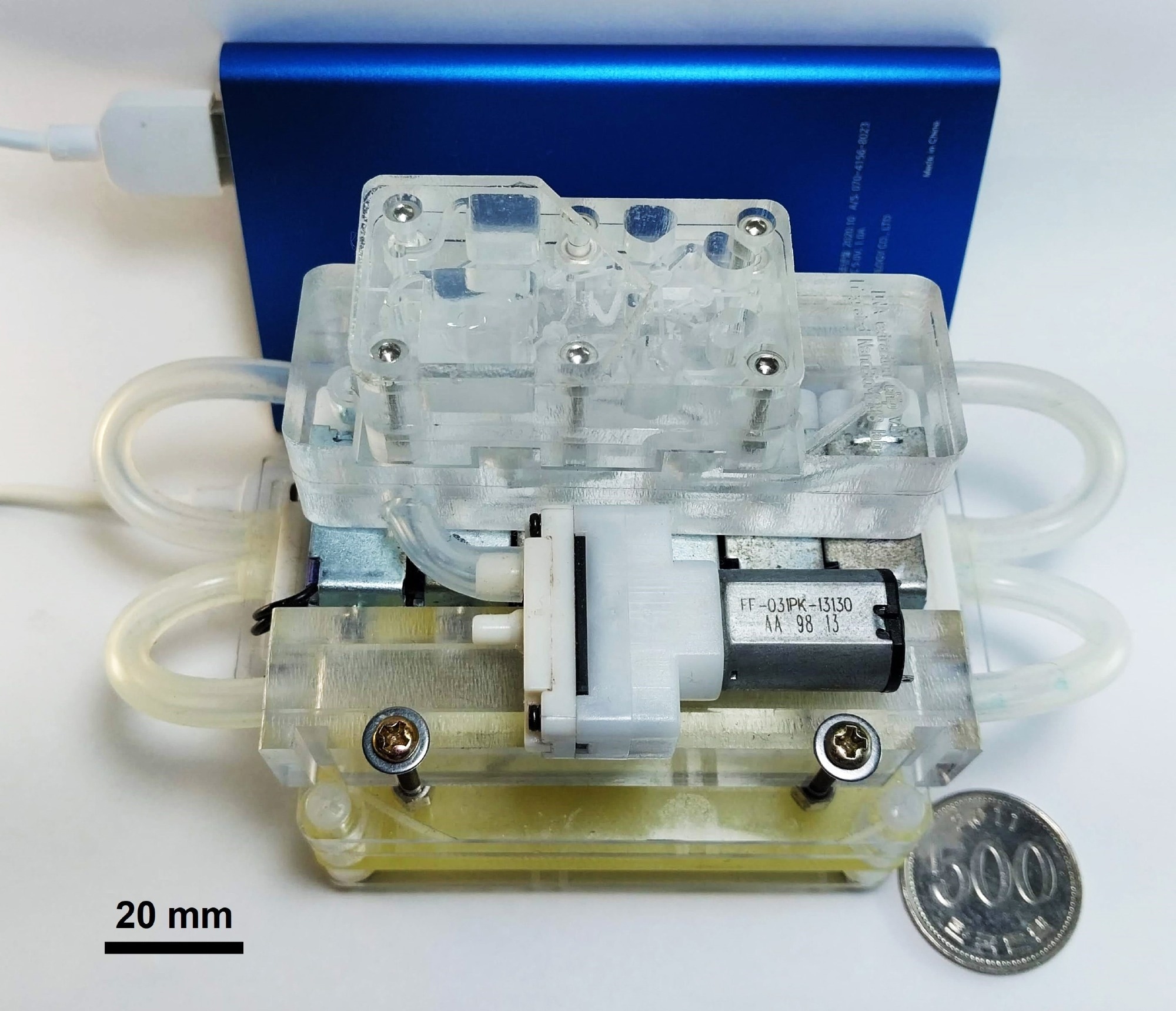People use smart voice assistants to get quick answers or to play their favorite music. This same technology has the potential to make laboratories safer for scientists and technicians who work with potentially infectious samples. Researchers have developed a small, voice-activated device that can retrieve and pretreat bacterial DNA, assisting in the protection of those on the front lines of disease outbreaks.
 This small, voice-activated device extracts and pretreats bacterial DNA and could make the laboratory safer for scientists and technicians. Image Credit: Adapted from ACS Sensors 2023.
This small, voice-activated device extracts and pretreats bacterial DNA and could make the laboratory safer for scientists and technicians. Image Credit: Adapted from ACS Sensors 2023.
The system could also make it easier for scientists with disabilities to conduct research. The study was published in the journal ACS Sensors.
To avoid accidental infection, researchers working with pathogen-containing samples must use the smallest amounts possible. On-site sample analysis is also ideal for the rapid diagnosis of highly contagious bacterial diseases.
Furthermore, investigators with visual or other physical impairments may struggle to operate complex instruments, particularly those designed for small volumes. Hands-free devices that respond quickly to voice commands may make this process simpler and safer. Tae Seok Seo and co-workers wanted to do just that, so they combined a speech recognition app with a miniaturized extraction system.
The scientists created a microfluidic chip with multiple chambers connected by six 3-way solenoid valves controlled by a microcontroller linked to a Bluetooth module. The 11-ounce palm-sized device could be powered by a portable battery or a 5 V smartphone charger. The group then customized a smartphone app to listen for specific voice commands using existing speech recognition software. This is how it works:
- When a user speaks one of the operation commands aloud, the app sends a wireless initiation signal to the microcontroller.
- When the signal is received, the microcontroller initiates a series of steps, including sample loading, washing, and releasing the purified DNA into a collection chamber.
The system requires the user to touch the smartphone to activate the speech recognition software, however, the researchers believe that with the addition of virtual assistant software, the entire operation could be made completely hands-free in the future.
The voice-controlled device extracted DNA from Salmonella Typhimurium in tests, purifying a 10 µL sample with a 70% efficiency in less than a minute. Although the system performed less well than a conventional DNA extraction kit, the researchers claim that its voice control, portability, and quick automation make it ideal for safe and convenient bacterial DNA testing.
Source:
Journal reference:
Bui, H. K., et al. (2023) Function of the Speech Recognition of the Smartphone to Automatically Operate a Portable Sample Pretreatment Microfluidic System. ACS Sensors. doi.org/10.1021/acssensors.2c01849.